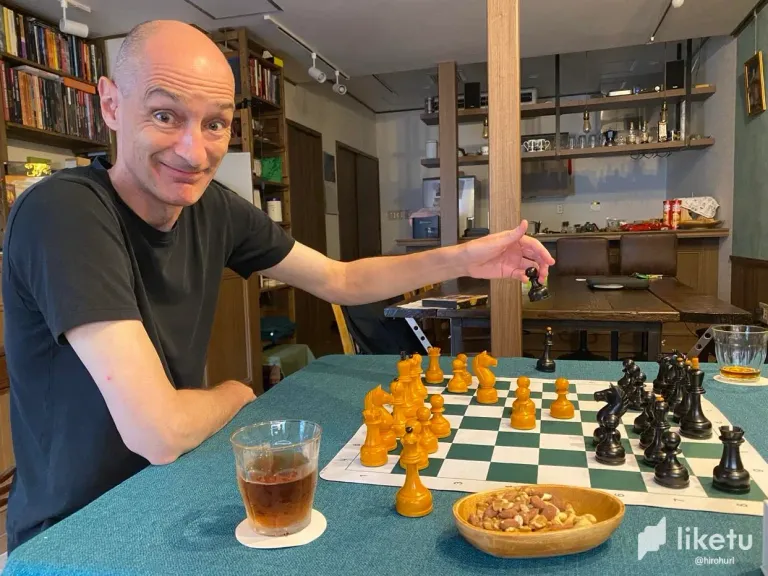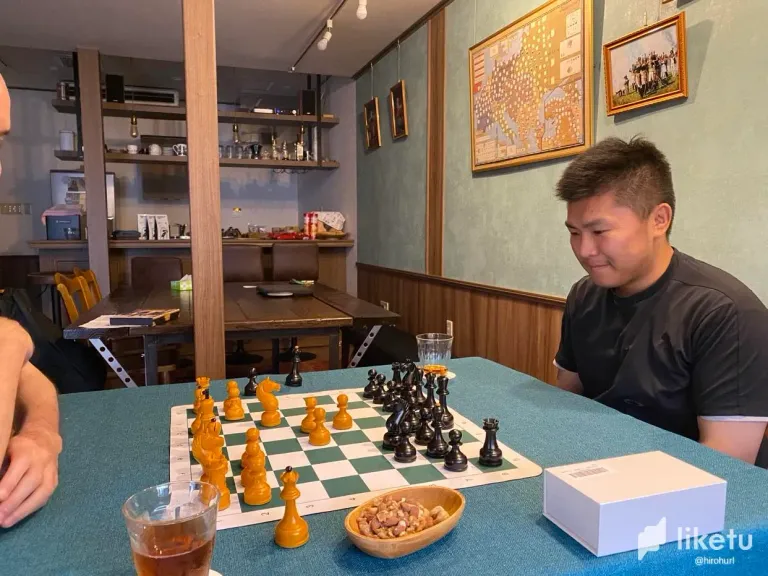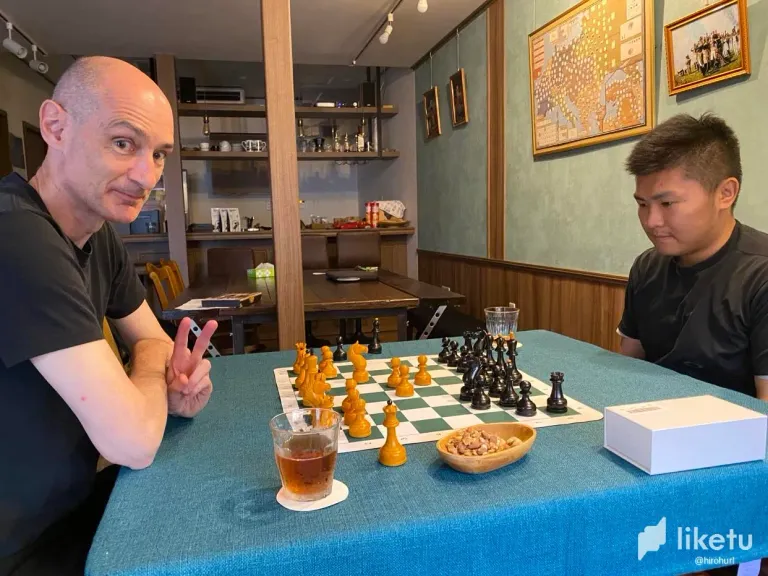



On my way home from college this afternoon I dropped into "The Board Room" a stone's throw from Nishi Hiroshima JR station to do some chess coaching.
The Board Room is where I hang out with a bunch of fellow nerds from time to time to drink beer and play board games or wargames.
Today, I met the owner's chess protégé, Senna, to put him through his paces and see where he's at with the game.
We played four games, two with no clock, and two with a clock.
In the first game I was black to see what Senna could do with white. Actually, he did quite a bit going into the early middle game. He put my kingside under a lot of pressure. I castled out of trouble and connected my rooks, leaving a Bishop was unprotected. He could have taken it with his queen. The question then would have been whether I could trap his queen or not: material advantage versus positional advantage. Actually, had he taken the bishop he may have had both, I'm not sure. But when he retreated his queen it gave me the opportunity to open up a middle file and bring my pieces into a coordinated attack to win the game a few moves later. 🙂
You can see the opening stages of the second game in the photos. I opened with 1.d4 and Senna headed into the King's Indian Defence, but on the fourth move he rashly advanced his queen's pawn, prompting my response, 5. cxd5 (grins smugly at the camera).
Having seen what he had in the tank in the first two games, I proposed two clock games, with 10 minutes for Senna and 5 minutes for me. It was Senna's first experience of playing with a clock so I taught him the basic etiquette: hit the clock with the same hand that you used to move a piece.
When it comes to time-handicap games, if you are the one with the handicap, then you need to play a dynamic opening. That I failed to do as black, in part because Senna opened with 1.d4 again - which is what I would have done had I been white with a time advantage because it tends to be a slower game than 1.e4. I ran out of time to think and Senna was able to combine his queen and bishop to force checkmate. I resigned with about 12 seconds left on my clock, but in retrospect I think that was a rookie-coaching error. I should have played a move instead of resigning so he could checkmate me. Even if he missed the checkmate I would have lost on time. Either way, I should have given my student the opportunity to checkmate me or win on time.
In the last game of the session, I again had a 5 minute handicap, but with the white pieces I opened with 1.e4 instead of my customary 1.d4 and went for my favourite king's pawn opening, the Giuoco Piano, which did not let me down. Actually, it was a fairly easy win as Senna made some blunders in this game.
Now I have some idea of his abilities I can start to build a coaching routine to help him make progress while I learn more about how to be a better chess coach for elementary level players.
It was a fun session, and actually quite refreshing.
Cheers!
David Hurley
#InspiredFocus
For the best experience view this post on Liketu




 -
- 
 )
)